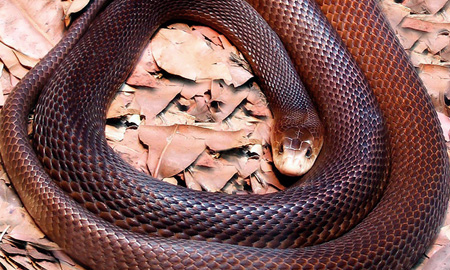Introduction
Tiger serpents (Notechis scutatus) are amongst one of the most fascinating yet been afraid reptiles found in Australia. With their striking look and powerful venom, these snakes stimulate a blend of admiration and care. Observing tiger snakes in their natural surroundings can be an exhilarating experience for nature lovers, wild animals professional photographers, and researchers alike. However, it's crucial to approach this undertaking with regard for the animal's environment and an understanding of safety measures to avoid serpent bites.
In this detailed overview, we'll explore just how to safely observe tiger serpents in their natural habitat. We will cover subjects varying from recognizing their habits and environments to emergency treatment for snake bites-- outfitting you with understanding to enhance your experience while lessening threats.
What is a Tiger Snake?
Tiger snakes are highly venomous serpents belonging to Australia, particularly Tasmania and coastal regions. They are understood for their distinct grouped coloration resembling a tiger's red stripes, which can vary from yellowish-brown to dark brownish or perhaps black.
Physical Characteristics
Tiger serpents are tool to large-sized serpents that can grow up to 2 meters long. Their bodies are robust, and they have a wide head that is clearly larger than their necks.
Habitat Preferences of Tiger Snakes
These reptiles generally live in marshes, tidewaters, and seaside areas but can likewise be located near freshwater resources like rivers and lakes. Recognizing where these snakes live is vital for any person looking to observe them safely.
Understanding Tiger Snake Behavior
Are Tiger Snakes Venomous?
Yes, tiger serpents are among one of the most poisonous snake types worldwide. Their poison contains neurotoxins that can lead to serious medical complications if bitten.
Behavioral Traits
Tiger snakes are normally reluctant animals; they prefer to prevent human communication. Nonetheless, they can come to be aggressive if intimidated or collared.

Where Can You Find Tiger Snakes?
Tiger Snake Habitat Exploration
To securely first aid kit with snake bite observe tiger snakes in their natural habitat, it's necessary first to determine where they thrive. They have a tendency to favor:
- Coastal marshlands Mangroves Swamps Riverbanks
Best Places for Observation
Some recommended locations include:
- Tasmanian wetlands The coastlines of southern Australia National parks with water bodies
Safety Safety measures Prior to Observing Tiger Snakes
Understanding the Threats of a Tiger Snake Bite
Although experiences with tiger snakes can be awesome, knowing the threats entailed is paramount:
Recognize signs and symptoms of a snake bite: swelling at the site, discomfort radiating from the bite area. Know emergency contacts: Familiarize yourself with local emergency situation services. Carry a first-aid package specifically furnished for serpent bites.First Help for Snake Bites: What You Required to Know
Knowing what steps to take if bitten might conserve your life or someone else's:
- Stay tranquility; activity boosts venom spread. Call for medical help immediately. Do not apply ice or attempt suctioning.
How to Securely Observe Tiger Snakes in Their Natural Habitat
When you choose to observe tiger serpents golden crowned snake in the wild:
Dress Appropriately: Put on lengthy trousers and durable boots. Use Binoculars: Maintain a secure range while observing these reptiles. Avoid Abrupt Movements: Quick movements might alarm them. Stay on Developed Trails: Stay clear of roaming into dense underbrush where exposure is low.Equipment Required for Observation
Essential Equipment Checklist
- Binoculars First-aid set particularly created for serpent bites Field manual on Australian reptiles Camera (with zoom ability)
Snake Bite First Aid Set Essentials
A well-equipped first aid package should consist of:|Product|Objective|| -------------------------------|-------------------------------|| Compression plaster|To debilitate the affected area|| Antihistamines|For allergic reactions|| Emergency get in touch with numbers|Quick access throughout emergencies|
Interpreting Tiger Serpent Signals
Understanding how tiger serpents connect with body language aids viewers evaluate when it's secure or dangerous:
Common Behaviors
Defensive posture: If curled or increased off the ground. Retreating behavior: When they slowly pull back from prospective threats.Dealing With Potential Encounters
Even with precautions taken, an encounter may still happen throughout your observation journey:
Remain calm; panicking just heightens risks. Slowly back away without turning your back on the snake. Make your presence known verbally however avoid sudden movements.Frequently Asked Questions About Tiger Snakes
1. What ought to I do if I see a tiger snake?
Remain calm; observe from a Toxin Neutralization distance without disturbing it.
2. Are infant tiger snakes dangerous?
Yes, juvenile tiger snakes are birthed poisonous and may present threats comparable to grownups regardless of being smaller.

3. Exactly how typical are tiger serpent bites?
While incidents take place every year in Australia, deaths are unusual due to punctual treatment availability.
4. Can I keep a tiger snake as a pet?
Keeping wild tiger serpents as animals is prohibited in numerous areas due to conservation laws.
5. What does a tiger serpent bite look like?
Bite marks usually show two puncture injuries in addition to localized swelling and discoloration.
6. How effective is antivenom?
Antivenom therapy is very efficient when administered prompt after a bite.
Conclusion
Observing tiger serpents in their all-natural environment provides an electrifying possibility for wild animals fans yet should be approached with care and respect for both the animal and its atmosphere. By arming on your own with expertise concerning these fascinating reptiles-- consisting of recognizing their behaviors and precaution-- you can delight in unforgettable experiences while significantly decreasing threats related to encounters.
In recap, constantly prioritize security by preparing effectively prior to starting any type of wild animals monitoring exploration-- especially when handling some of nature's most venomous animals like the tiger snake!